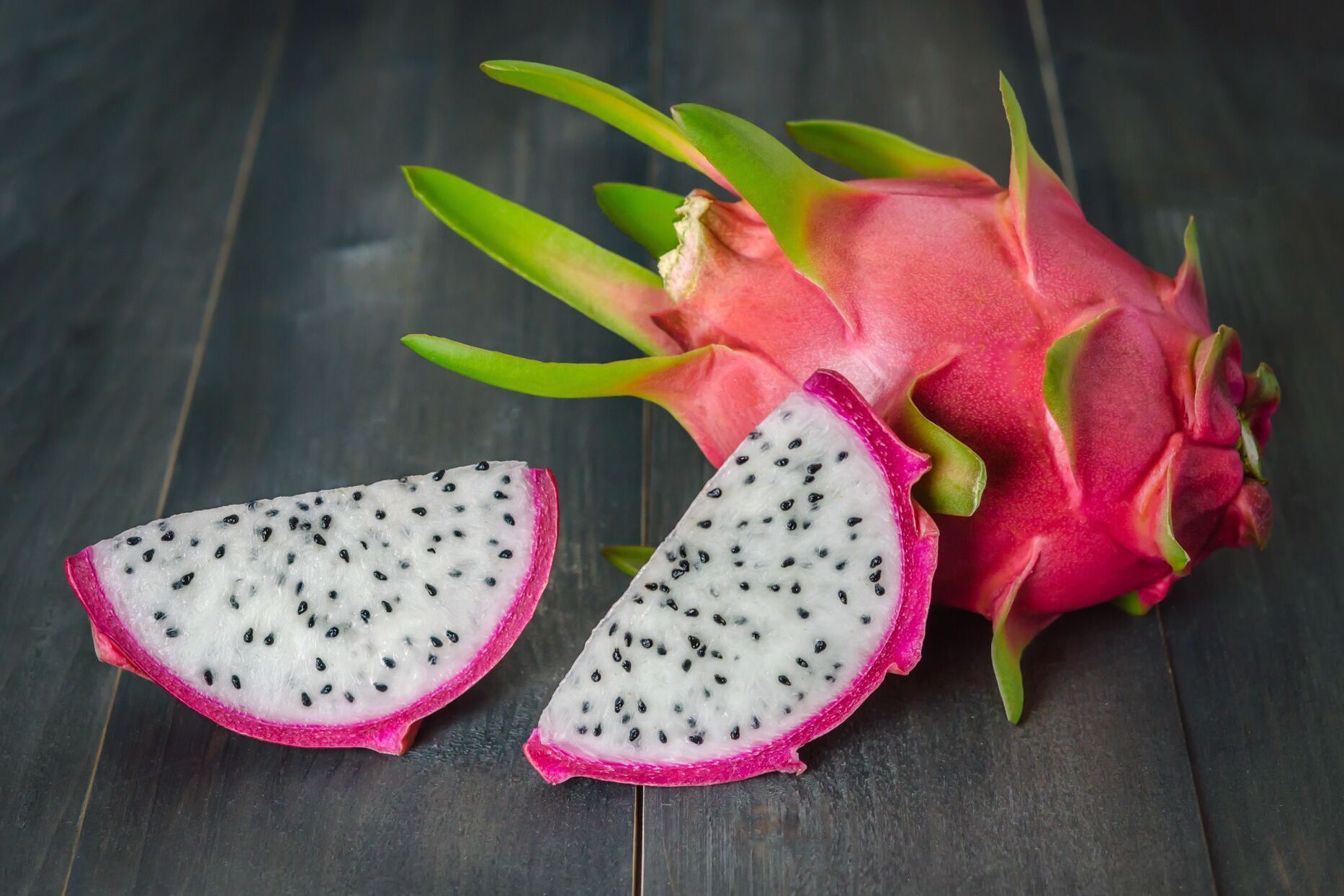
Dragonfruit, also known as pitaya, is a tropical fruit that has captured the curiosity of many with its vibrant colors and unique taste. But what exactly makes this fruit so special? Dragonfruit is not just a pretty face; it packs a punch with numerous health benefits and fascinating origins. From its rich history in Central America to its current popularity in health-conscious diets, this fruit has a lot to offer. Whether you're a foodie, a health enthusiast, or just someone who loves learning new things, these 25 facts about dragonfruit will surely pique your interest. Ready to dive in? Let's get started!
Key Takeaways:
- Dragonfruit, also known as pitaya, is a tropical fruit rich in antioxidants, fiber, and vitamin C. It can boost your immune system, aid in digestion, and promote healthy skin.
- You can enjoy dragonfruit in various ways, from eating it fresh to adding it to smoothies or even grilling it. Its seeds are edible and add a crunchy texture similar to kiwi seeds.
What is Dragonfruit?
Dragonfruit, also known as pitaya, is a tropical fruit that has gained popularity for its unique appearance and health benefits. This vibrant fruit comes from a type of cactus and is often enjoyed for its sweet taste and crunchy texture.
-
Dragonfruit is native to Central America but is now grown in many tropical and subtropical regions around the world.
-
The fruit comes in three main types: white-fleshed (Hylocereus undatus), red-fleshed (Hylocereus costaricensis), and yellow-skinned with white flesh (Hylocereus megalanthus).
-
Dragonfruit is rich in antioxidants, which help protect cells from damage by free radicals.
Nutritional Benefits of Dragonfruit
Dragonfruit isn't just pretty to look at; it's also packed with nutrients that can benefit your health in various ways.
-
One cup of dragonfruit contains about 136 calories, making it a low-calorie snack option.
-
It is an excellent source of vitamin C, which boosts the immune system and promotes healthy skin.
-
Dragonfruit contains fiber, aiding in digestion and helping to maintain a healthy weight.
-
The fruit is also a good source of magnesium, which is essential for muscle function and bone health.
Dragonfruit and Health
Eating dragonfruit can have several positive effects on your health, from improving digestion to boosting your immune system.
-
The antioxidants in dragonfruit can help reduce inflammation and lower the risk of chronic diseases.
-
Its high fiber content can help regulate blood sugar levels, making it a good choice for people with diabetes.
-
Dragonfruit contains prebiotics that promote the growth of healthy bacteria in the gut.
-
The fruit's vitamin C content can help reduce the duration and severity of colds.
How to Eat Dragonfruit
Dragonfruit can be enjoyed in many ways, whether you prefer it fresh, in a smoothie, or even grilled.
-
To eat dragonfruit, simply cut it in half and scoop out the flesh with a spoon.
-
It can be added to fruit salads for a burst of color and flavor.
-
Dragonfruit smoothies are a popular choice for a refreshing and nutritious drink.
-
The fruit can also be grilled and served as a unique side dish.
Fun Facts About Dragonfruit
Beyond its health benefits and culinary uses, dragonfruit has some interesting and fun facts that make it even more fascinating.
-
The name "dragonfruit" comes from its scaly appearance, which resembles dragon scales.
-
Dragonfruit flowers bloom only at night and are often called "moonflowers."
-
The flowers are large and fragrant, attracting pollinators like bats and moths.
-
In Vietnam, dragonfruit is often used as a symbol of prosperity and good luck.
-
The fruit's seeds are edible and add a crunchy texture similar to kiwi seeds.
Growing Dragonfruit
If you're interested in growing your own dragonfruit, it's easier than you might think.
-
Dragonfruit plants are climbing cacti that need support, such as a trellis or a fence.
-
They require well-draining soil and plenty of sunlight to thrive.
-
Dragonfruit plants can produce fruit several times a year under the right conditions.
-
The plants are relatively low-maintenance, needing only occasional watering and pruning.
-
Dragonfruit can be grown from seeds or cuttings, making it accessible for home gardeners.
Dragonfruit's Unique Charm
Dragonfruit stands out with its vibrant colors and unique taste. Packed with vitamins, fiber, and antioxidants, it's a nutritional powerhouse. This fruit isn't just pretty; it supports digestion, boosts immunity, and even aids in weight loss. Its low-calorie content makes it a guilt-free treat. Whether you enjoy it fresh, in smoothies, or as a topping, dragonfruit adds a tropical twist to your diet.
Growing dragonfruit can be a fun project too. With the right conditions, you can cultivate this exotic fruit in your backyard. Plus, its cactus-like appearance makes it a striking addition to any garden.
So, next time you spot dragonfruit at the store, give it a try. Your taste buds and body will thank you. Embrace the vibrant world of dragonfruit and enjoy its many benefits.
Frequently Asked Questions
Was this page helpful?
Our commitment to delivering trustworthy and engaging content is at the heart of what we do. Each fact on our site is contributed by real users like you, bringing a wealth of diverse insights and information. To ensure the highest standards of accuracy and reliability, our dedicated editors meticulously review each submission. This process guarantees that the facts we share are not only fascinating but also credible. Trust in our commitment to quality and authenticity as you explore and learn with us.


